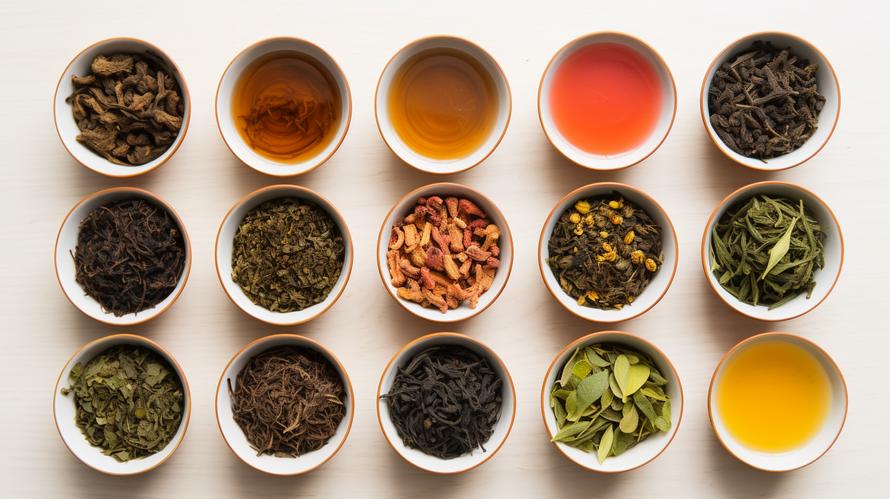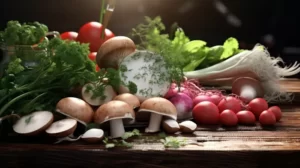Nestled within the lush, misty mountains of China’s Fujian province, an ancient tree stretches toward the heavens, its gnarled branches hoarding untold secrets. This isn’t just any tree—it’s said to be the mother of all tea trees, some millennia old, and its leaves contain more than just refreshing flavors. They hold the essence of longevity, of vitality, of the very soul of what we now know as Chinese tea culture. This story threads through the origins of an elixir believed to harbor health benefits so vast that they have transcended time, empires, and scientific scrutiny.
China’s reverence for tea is not just steeped in tradition but is a living, breathing testament to a culture that has lionized the beverage as a panacea for thousands of years. These leaves, with their complex and layered tastes, have been nurtured through centuries to bring forth an array of teas that don’t just satiate a thirst but could potentially enhance your wellbeing.
Let’s explore the dynasty of healthy Chinese teas and uncover the intricate tapestry of benefits each varietal brings to your steaming cup.
Green Dragon in a Cup – Longjing Tea
Longjing or Dragon Well tea, a pan-roasted green tea from Hangzhou, gets its name from the legend of a rain-bringing dragon residing in a local well. Brimming with catechins, this subtly sweet and lightly grassy elixir teases your palate while unfurling a host of antioxidants that aid in bursting the bubbles of inflammation and thwarting cellular villains.
The Dark Horse – Pu-erh Tea
Pu-erh, the dark, earthy brew often compacted into cakes, undergoes a fermentation process that embarks it on a flavor journey from robust to refined over years, sometimes decades. This tea’s microbiome whispers tales of improved digestion, weight management, and cholesterol-lowering prowess, a true witness to the adage that good things often come with time.
Liquid Jade – Biluochun Tea
Uncoil the tight spirals of Biluochun, another green tea champion, and you’ll release the aroma of spring itself. Its name, “Green Snail Spring,” gives away its curly appearance and seasonal birth. Lean in for the high levels of amino acids that support brain function and mental alertness, all delivered with a gentle, floral finish.
The Phoenix’s Chorus – Dan Cong Tea
The Osmanthus-scented Dan Cong tea hails from the Phoenix Mountains. Each bush yields a unique flavor note, often mimicking fruits or flowers. The polyphenols in its amber liquid dance with the potential to halt uninvited growths and strengthen heart health, making every sip a soliloquy of wellness.
Misty Veil of Health – Tieguanyin Tea
Tieguanyin, the “Iron Goddess of Mercy”, is an oolong that strikes an enviable balance between green and black teas. This partially oxidized tea brings forth the might of its namesake, bestowing upon drinkers a metallic clink against diseases with its high levels of antioxidants and digestive aids.
A Whisper of Blossoms – Jasmine Tea
Fragranced with the essence of jasmine flowers, this tea is most often a scented green tea variant. Beyond its calming aroma, it offers a garden of benefits including stress relief, immune support, and possible reductions in heart-related risks. Every pot sings the poetry of night-blooming jasmine, weaving an aromatic tapestry of tranquility.
The Emperor’s Red Robe – Da Hong Pao Tea
As one of the most expensive teas in the world, Da Hong Pao or “Big Red Robe” from the Wuyi Mountains carries a legend that attributes its origin to the healing of an ill emperor. Rich in catechins and minerals, this oolong could be considered the tea of economic and physical resilience, with a robust flavor that underpins its majestic reputation.
The Tonic of Emperors – Gynostemma Tea
Also known as Jiaogulan, Gynostemma tea is a more recent addition to the royal tea court, touted as an “immortality herb” in southern China due to the long life spans of locals. With a profile rich in gypenosides, similar in nature to the ginsenosides in ginseng, this tea is revered for its alleged adaptogenic qualities that aid in balancing the body’s stress response.
To brew the perfect cup of Chinese tea, follow these general guidelines, adjusting for your personal taste and the specific tea type:
1. Use fresh, filtered water. Good water translates to a good cup of tea.
2. Heat the water to the right temperature. Greens and whites thrive at lower temperatures (160-180°F), while oolongs and blacks crave a hotter cradle (180-212°F).
3. Measure your tea leaves. About a teaspoon per cup is adequate, though the strength desired might nudge you to adjust.
4. Mind the steeping time. Delicate leaves like those of green tea shouldn’t bathe beyond three minutes, while heartier oolong and black teas can savor the hot soak up to five minutes or more.
5. Sip while hot, but not scalding, allowing the full orchestra of flavors to perform on your palate.
Define your day with a ritual of brewing a cup of Chinese tea. Each type holds a palette of flavors and potential health benefits, steeped in both history and modern science. Whichever tea you select, know that it comes to you as a leafy legacy, a botanical brew that connects you to the very roots of Chinese culture and wellness.
However, as with any health advice, it would be prudent to remember moderation is key, and including these teas into a balanced diet and healthy lifestyle is essential. To fully understand the benefits and any possible side effects, consult with a healthcare provider, especially if you have underlying health conditions or are pregnant.
And while the tangible health advantages of tea may vary from one study to another, one thing remains irrefutable: the peaceful solitude and mindfulness that accompanies the act of preparing and enjoying a cup of tea are universally therapeutic. In the end, perhaps that is the most profound health benefit Chinese tea has to offer—a momentary retreat from the chaos of the world, a sip of serenity amid life’s storms.



